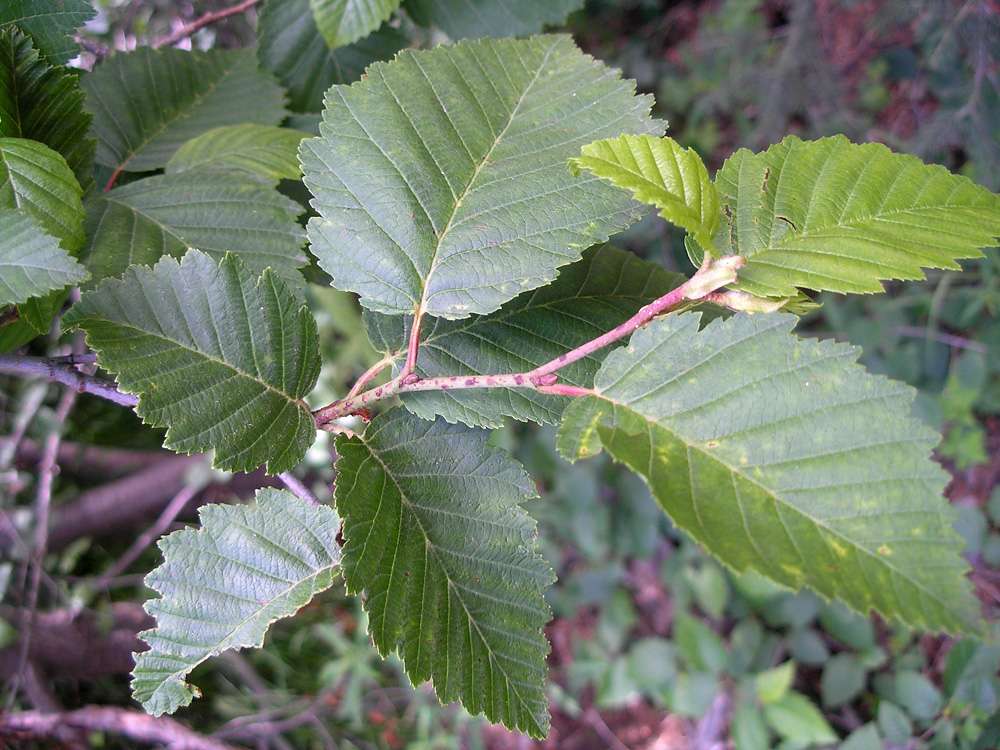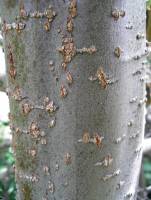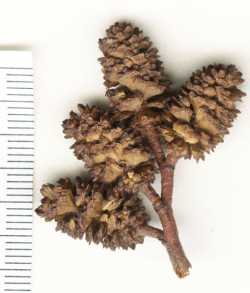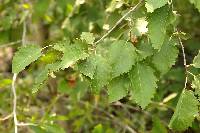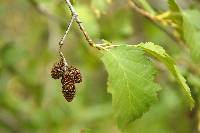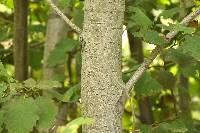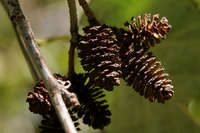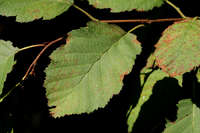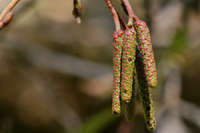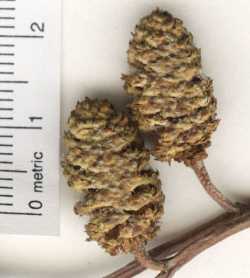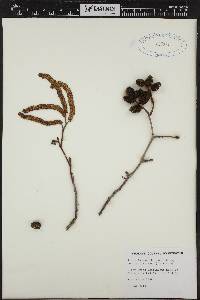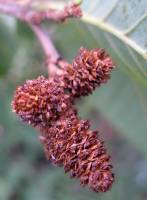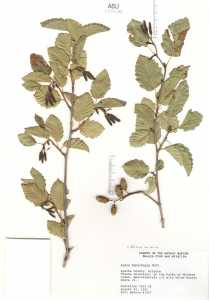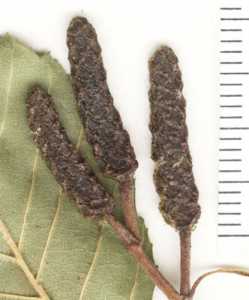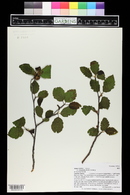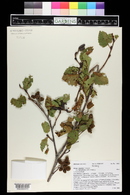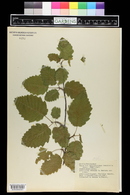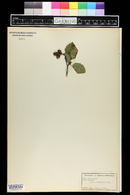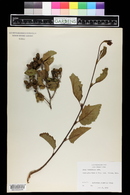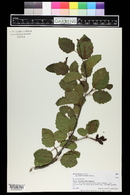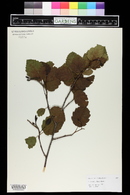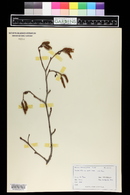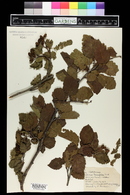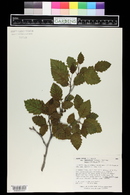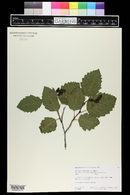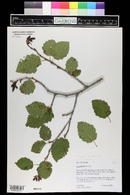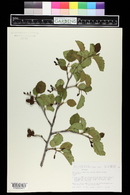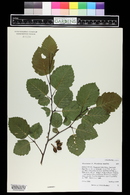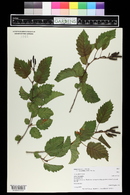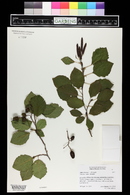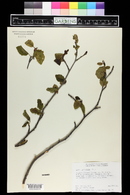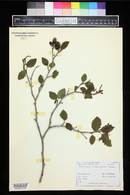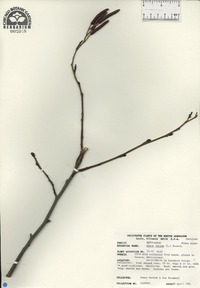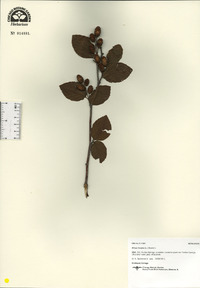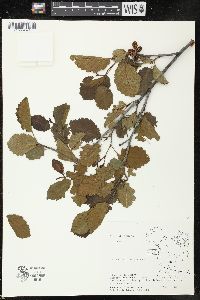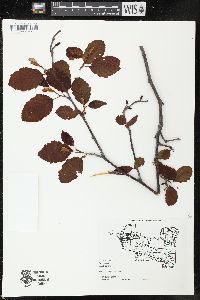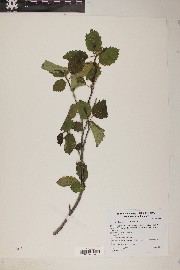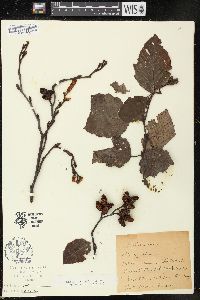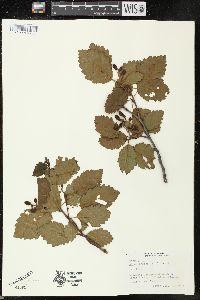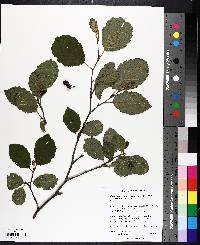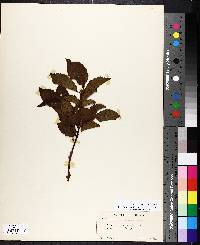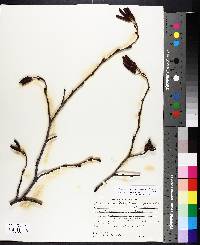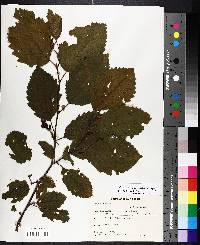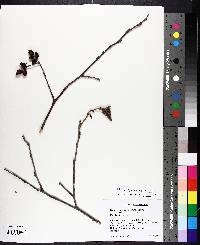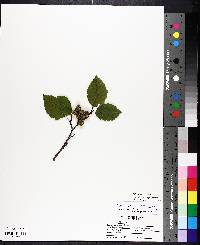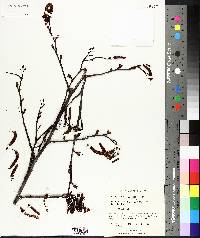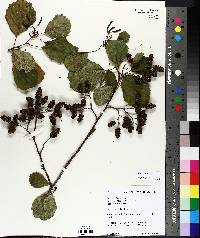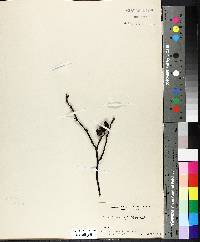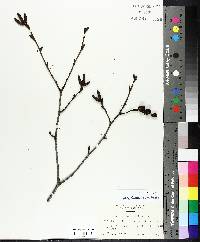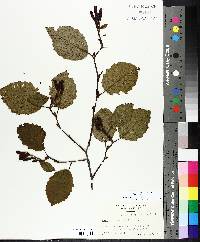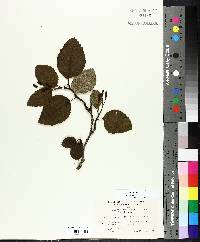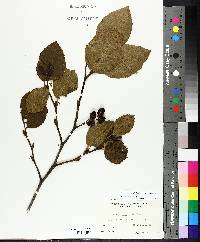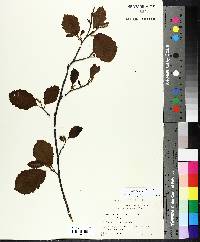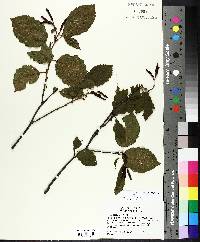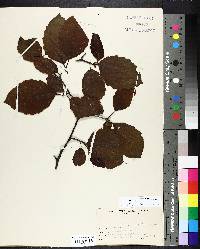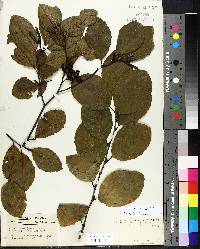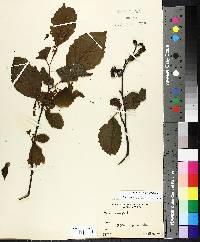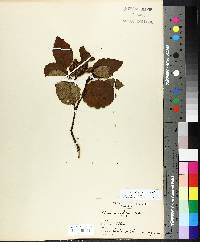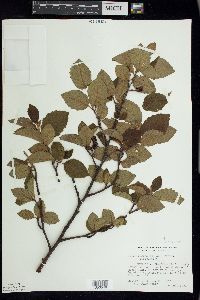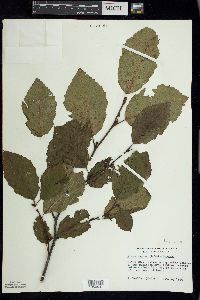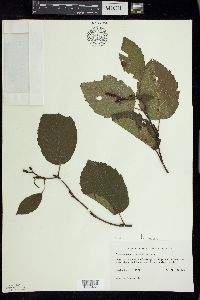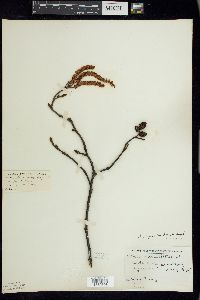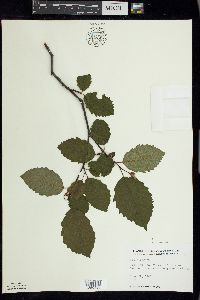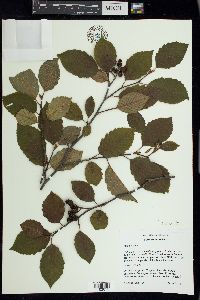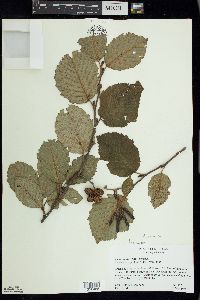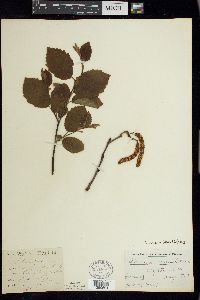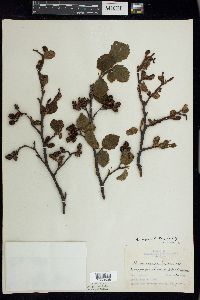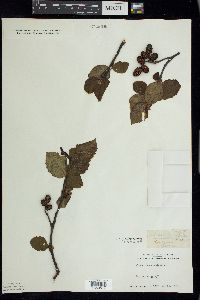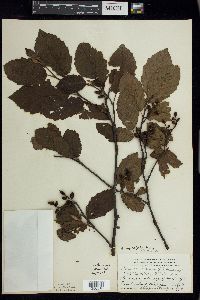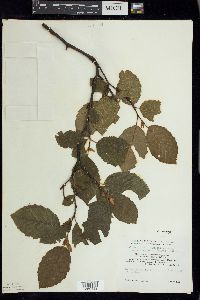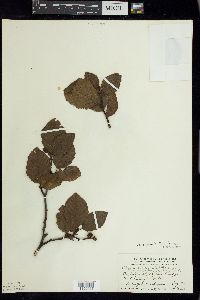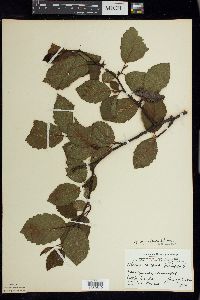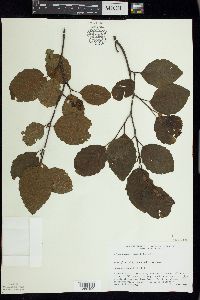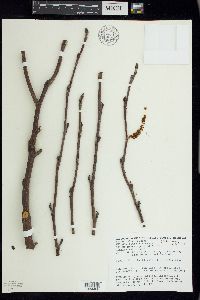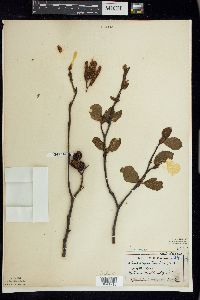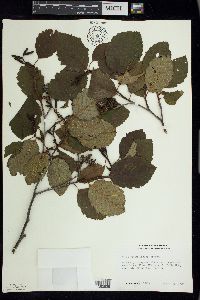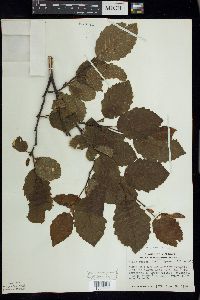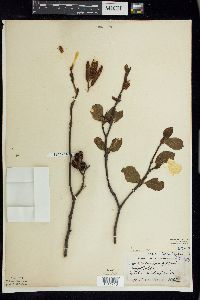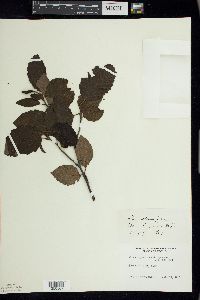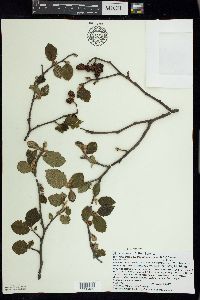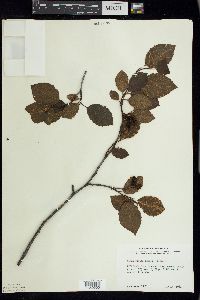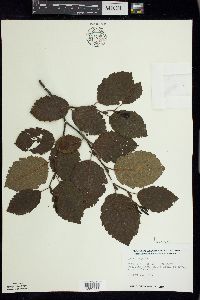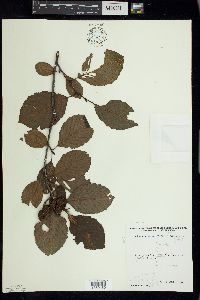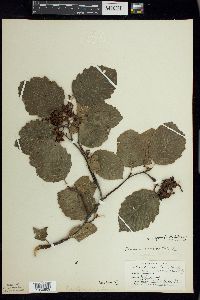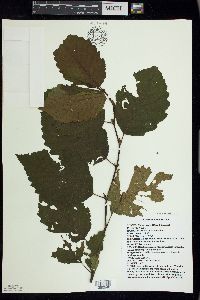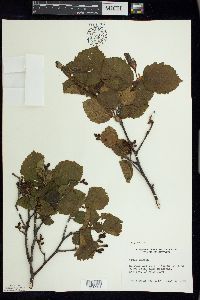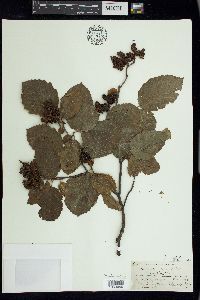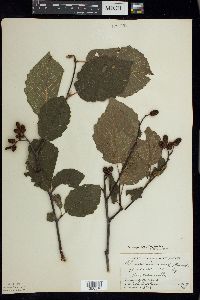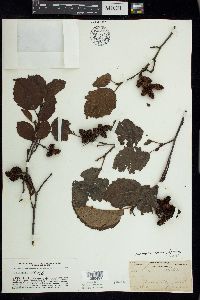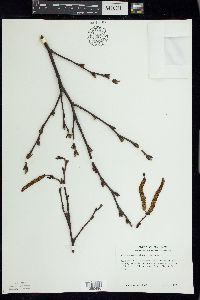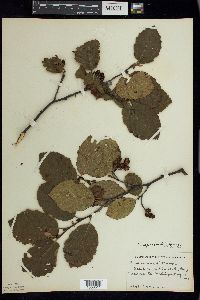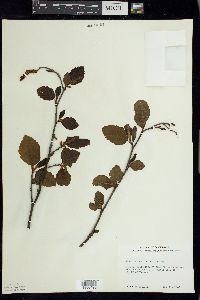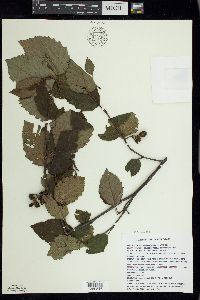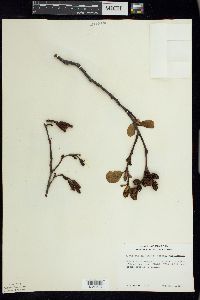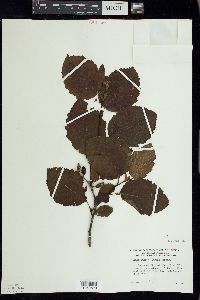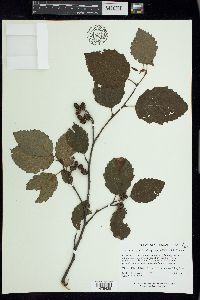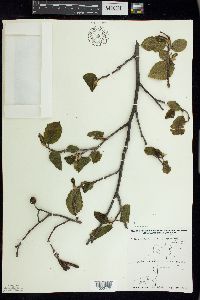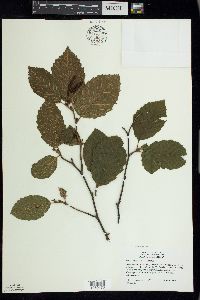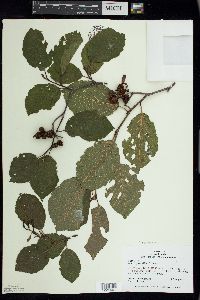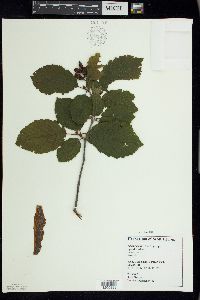Alnus incana
|
|
|
|
Family: Betulaceae
Speckled Alder, more...gray alder, mountain alder
[Betula incana (L.) L.f.] |
Trees and shrubs , to 25 m; crowns open. Bark light to dark gray, reddish, or brown, smooth, or in age broken into irregular plates; lenticels present or absent, conspicuous, enlarged or unexpanded. Winter buds stipitate, ellipsoid, 4--7 mm, apex rounded to nearly acute; stalk 1--3 mm; scales 2--3, equal, valvate, resin-coated. Leaf blade narrowly ovate to elliptic, base cuneate to narrowly rounded, margins doubly serrate, with distinctly larger secondary teeth, apex acute or short-acuminate to obtuse. Inflorescences formed season before flowering and exposed during winter. Flowering before new growth in spring. Infructescences ovoid to nearly cylindric; peduncles relatively short and stout. Samaras elliptic to obovate, wings narrower than body, irregular in shape. Native Americans used Alnus incana medicinally to treat anemia, as an emetic, a compress or wash for sore eyes, and a diaphoretic, for internal bleeding, urinary problems, sprains, bruises or backaches, itches, flux, and piles, to cure saddle gall in horses, and when mixed with powdered bumblebees, as an aid for difficult labor (D. E. Moerman 1986).
Plant: Large shrub or small shrubby tree, to 9 m tall; bark of older trunks reddish-brown; winter buds rounded to nearly acute apically, the scales 2-3 Leaves: blades elliptic or ovate-oblong (rarely ovate), 4-8 cm long, 3-5 cm wide, the bases rounded, truncate, or subcordate; margins doubly serrate, the major teeth acute to obtuse or rounded in outline, each comprised of several smaller teeth INFLORESCENCE: catkins in clusters of 2-5, with 1 or more clusters on a branchlet; basal fruiting catkins of a cluster on peduncles 0-4 mm long; individual fruiting catkins spheroid to nearly cylindric, 0.7-2 cm long, 0.7-1.2 cm wide Flowers: STAMINATE FLOWERS each with 4 stamens; PISTILLATE FLOWERS usually 2 per scale Fruit: samaras, elliptic to obovate, the wings narrower than the body, irregular in shape REFERENCES: Brasher, Jeffrey W. 2001. Betulaceae. J. Ariz. - Nev. Acad. Sci. Volume 33(1) Tall colonial shrub or small tree; winter buds evidently stalked, with 2-3 equal scales; lvs oval, elliptic, or ovate, broadest near or below the middle, obtuse to short- acuminate, sharply and irregularly double-serrate or almost lobulate, broadly obtuse to rounded at base, with mostly 8-14 principal veins on a side, soon becoming pale and glaucous beneath, ±pubescent, especially on the veins, not glutinous; staminate catkins mature before the lvs begin to open; anthers virtually sessile; fruiting catkins mostly sessile or only short-pedunculate, crowded in small, naked infls, 1-1.5(2) cm, seldom much over 1 cm thick; frs 2-3.5 mm, narrowly coriaceous-winged or merely thin-margined; 2n=28. Wet soil; circumboreal, s. to Md., W.Va., Ill., and the w. cordillera. E. Amer. pls, as here described, are var. americana Regel (A. rugosa; A. incana ssp. rugosa) Gleason, Henry A. & Cronquist, Arthur J. 1991. Manual of vascular plants of northeastern United States and adjacent Canada. lxxv + 910 pp. ©The New York Botanical Garden. All rights reserved. Used by permission. From Flora of Indiana (1940) by Charles C. Deam Frequent in low ground about sloughs in the dunes near Lake Michigan and rare to very rare elsewhere in low woods or in low ground along streams. All of my specimens have the leaves more or less glaucous beneath and more or less pubescent, at least on the principal veins. ...... Indiana Coefficient of Conservatism: C = 9 Wetland Indicator Status: FACW Diagnostic Traits: Shrubs; leaves ovate to elliptic, margins doubly serrate, apex acute to obtuse; seeds produced in a cluster of woody, cone-like catkins. North American populations are treated as subsp. rugosa. Deam (1932): This species could be used to good advantage in ornamental planting in low ground. It grows rapidly, is easily transplanted, and its foliage is dense and attractive. |
|
|
|

